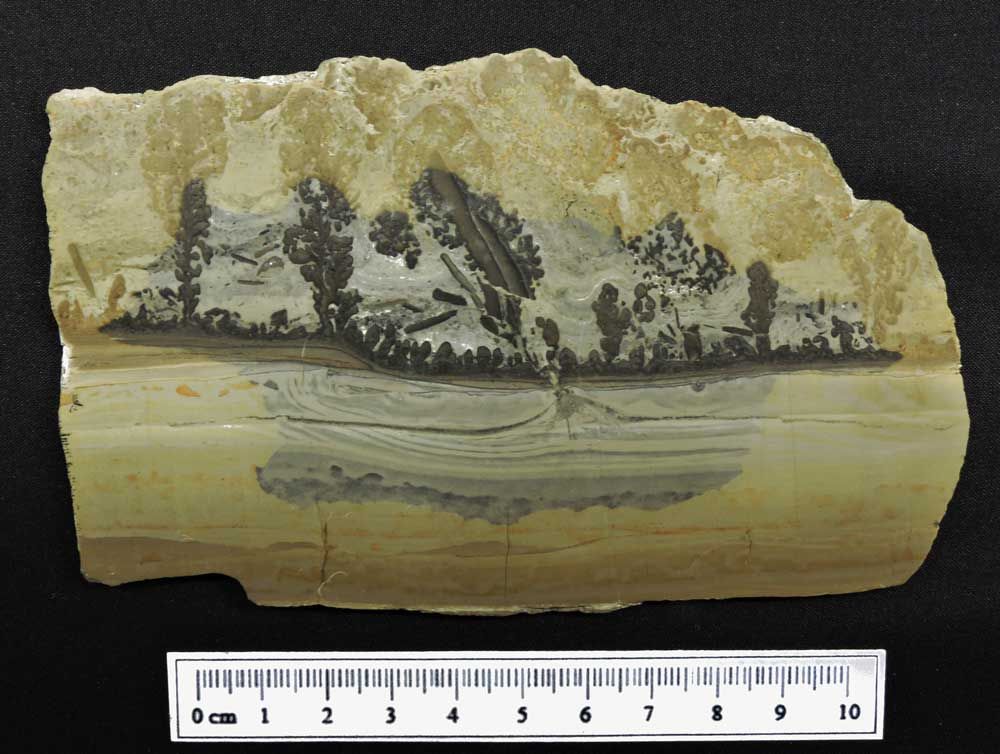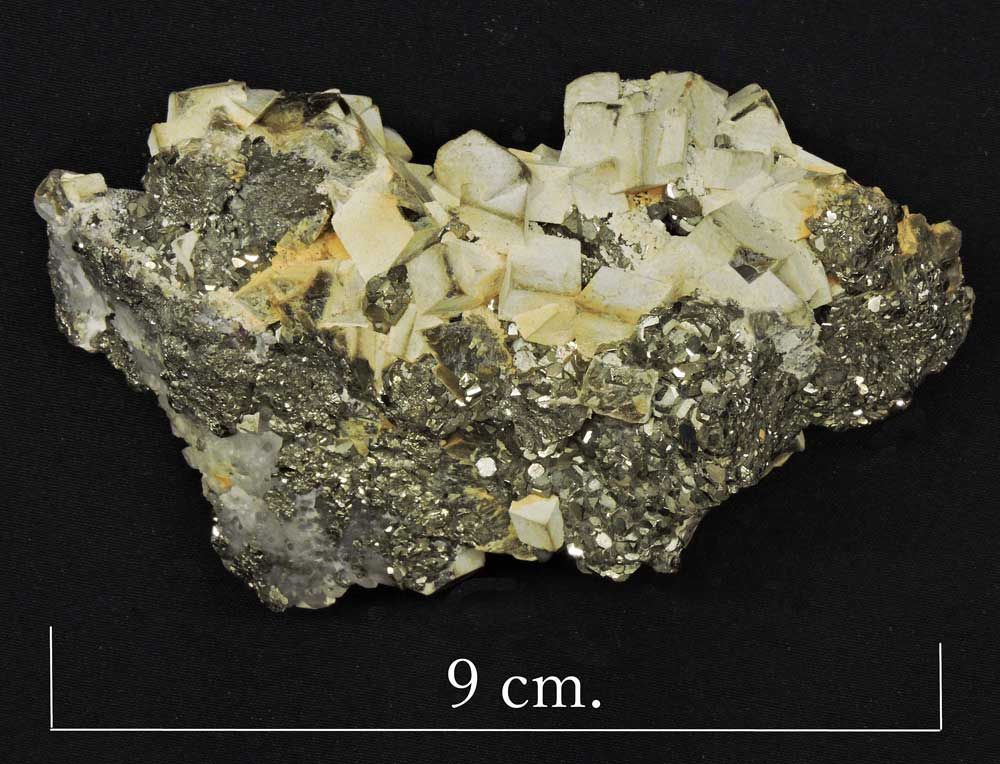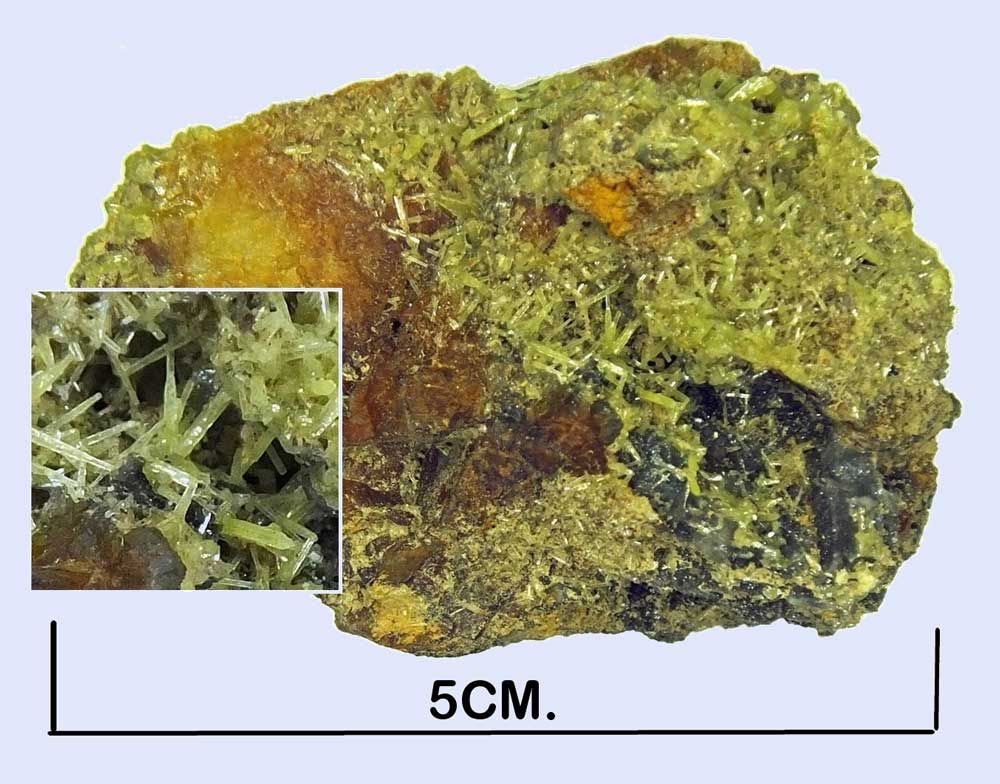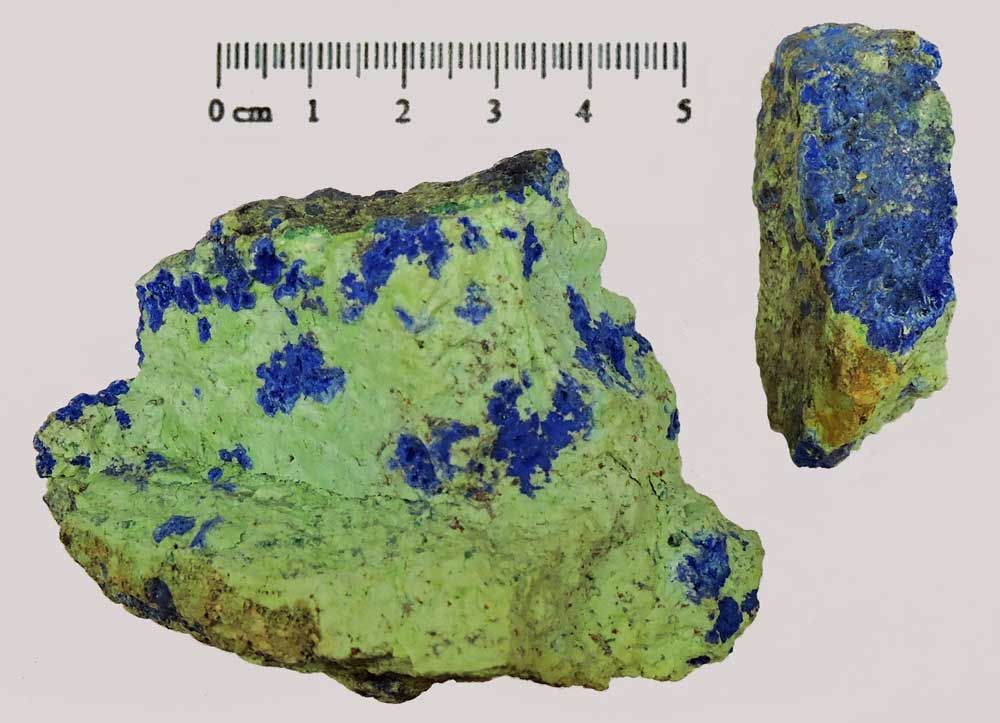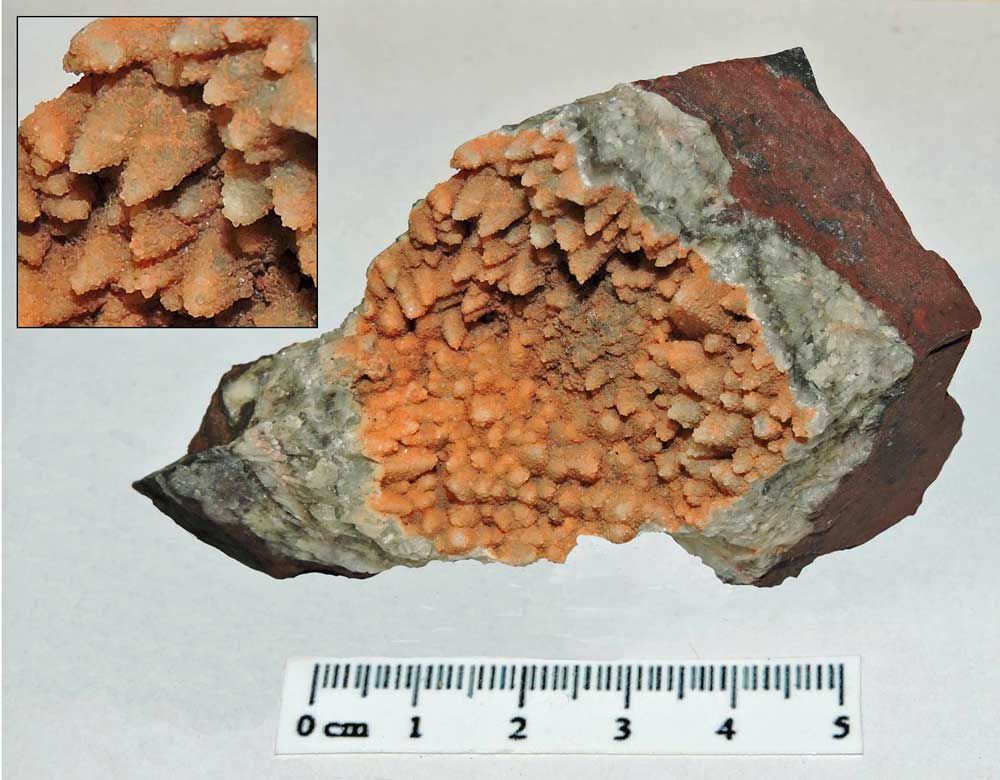
Calcite, Whately quarry.
Calcite, CaCO3 Calcium carbonate. This specimen is from Whately quarry near Wells in Somerset. The quarry is a limestone quarry, and not surprisingly the most collected mineral from this quarry is calcite. The scalenahedral crystals have developed in a void, and are cream coloured. The orange effect is because the basic crystals have been coated with minute orange coloured crystals. The crystals are based on a bed of massive calcite, which is atop a base rock of hematite.
